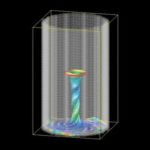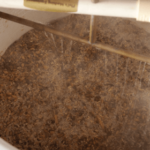Writer: Chris Bible
Crystallization: Forming the ice in your eisbock, baby
To make a good eisbock (or any other kind of ice beer) it is helpful to have a good understanding of how ice crystals form, and to be able to effectively manage crystal formation within the beer.
Whirlpool Dynamics: The physics of trub removal
Whirlpooling is a method for separating trub from wort that is widely used by homebrewers and commercial brewers. In commercial breweries, trub-containing wort is pumped tangentially into a tank with a flow
Brewing with Dark Grains
Dark grains are an important ingredient in brewing many styles of beer. Grains that can be considered to be the “classic dark grains” include chocolate barley, black patent barley and unmalted, roasted
Understanding Beer Spoilage
Microorganisms can cause undesirable effects on beer in several ways, including undesirable changes in beer flavor and aroma. Growth of microorganisms on raw materials or in wort can produce changes that alter
The Chemistry of Beer Flavor
Beer is comprised of hundreds of different chemical compounds that contribute to the overall flavor and aroma perception of the beer. Different styles of beer have different flavor and aroma characteristics that
Beer Styles and Statistics
The concept of beer styles can be viewed in (at least) two different ways. One possible school of thought is that beer styles are merely ways in which people can categorize types
Theory and Practice of Lautering
Lautering is the act of separating sweet wort from spent grains. The act of lautering wort is physically very similar to filtration. The flow of wort through a grain bed can be
Milling — Theory and Practical Consideration
An all-grain brew day starts with heating the water and milling the grain. Learn the best ways to mill your malt.
Preventing Diacetyl
Vicinal diketones (VDKs) are the products of normal beer fermentation within a brewery. The two VDKs that are of primary concern to brewers are 2,3-butanedione (diacetyl) and 2,3-pentanedione. Diacetyl in a finished
Understanding Yeast Metabolism
Yeast are microscopic, unicellular fungi that are capable of converting various types of sugar into ethanol and other byproducts. Yeast take in sugars and anaerobically (without oxygen) metabolize them to produce energy,
Fermentation Temperature Control
Fermentation temperature is a critical brewing variable. Temperature directly influences the metabolic rate of the yeast and the rate of the biochemical reactions associated with fermentation. Fermentation temperature has a significant impact
Oxygenation of Wort
Availability of dissolved oxygen to yeast during the initial stage of fermentation is very important. Yeast use oxygen to build cell membrane components that are essential to replication. Unsaturated fatty acids, sterols












